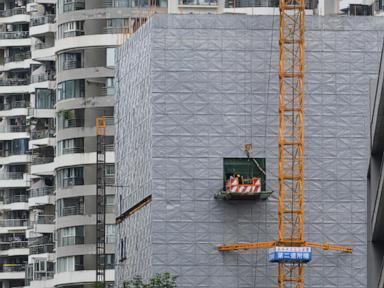Xi Jinping Leads Key Meeting to Set China’s Five-Year Goals

HONG KONG — Starting on Monday, Xi Jinping and senior officials from the Communist Party of China convene in a significant meeting to outline objectives for the next five years. This gathering, known as the fourth plenum, will focus on finalizing China’s five-year plan for the period of 2026-2030. Scheduled to last four days, the discussions come during a critical time of escalating trade tensions between China and the United States.
The fourth plenum is one of the seven plenary sessions that occur during the five-year term of the Communist Party’s central committee. Approximately 370 members are expected to participate. Although the decisions made during this closed-door meeting may not be disclosed immediately, they are crucial for aligning the party’s agenda with the expectations of both officials and the public.
Economic Context and Challenges
Current economic forecasts indicate that China’s economy is anticipated to grow by 4.8% this year, closely matching the official target of around 5%. The World Bank has projected this growth amid a backdrop of challenges, including a recent slowdown in growth rates, which recorded a mere 4.8% for the July to September period — the lowest in a year.
Trade tensions, exacerbated by the ongoing trade war initiated during Donald Trump‘s presidency, have pressured China’s economy. Additionally, chronic domestic issues, such as overcapacity in industrial sectors and a struggling property market, pose challenges to sustained growth. Analysts from institutions like ING Bank and UBS emphasize the importance of boosting consumer spending and business investment to revitalize economic activity.
As the leadership meets, there is particular focus on Xi Jinping‘s ambition for China to achieve technological self-sufficiency. This initiative aims to reduce reliance on advanced computer chips imported from the United States. According to Ning Zhang, a senior economist at UBS, intensified American export controls are driving increased investment in domestic technology sectors.
Policy Implications and Future Directions
One of the key questions emerging from this meeting is whether there will be a significant shift in the leadership’s approach to stimulating consumer consumption. Incremental policy measures, such as enhanced government subsidies for child care and consumer loans, have been implemented. Yet, economists like Leah Fahy from Capital Economics argue that more decisive actions are necessary to generate a meaningful impact.
The lingering effects of a burst property bubble have dampened consumer confidence, making it imperative for the government to explore bolder strategies to foster economic growth. Current trends indicate that while China’s exports to regions like Southeast Asia and Africa are on the rise, competition in domestic markets is fierce, leading to price wars, particularly in the automotive sector.
Additionally, demographic challenges contribute to economic strain. With a rapidly aging population and a youth unemployment rate nearing 19%, the economic contributions of younger generations are becoming increasingly critical. This demographic shift poses long-term risks to the labor market and economic sustainability.
As Wendy Leutert, an economics and trade professor at Indiana University, notes, the Chinese leadership appears willing to accept certain economic costs in pursuit of technological leadership and national strength. The overarching goal remains to double the size of China’s economy by 2035, a challenging target that underscores the need for stable growth rates between 4% and 5% over the next decade.
Ultimately, demonstrating a commitment to economic growth and improving living standards is essential for the legitimacy of the ruling party. As the fourth plenum unfolds, the global community will be watching for signals about the direction of China’s economic policies and its implications for international relations.






